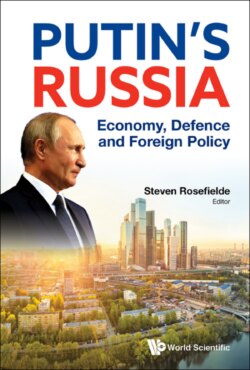Читать книгу Putin's Russia - Группа авторов - Страница 43
На сайте Литреса книга снята с продажи.
Idiosyncratic Features of Russia’s Banking Sector
ОглавлениеAccording to Gevorkyan (2018, pp. 208–209), there are similarities in the banking sector development in Central and Eastern Europe (CEE) and the Former Soviet Union (FSU), such as the emergence of strong national central banks; proliferation of private banking activity, mainly driven by foreign banks from Western Europe; and strong growth in private domestic credit. All these features are to some extent applicable to Russia; however, private banks have limited impact in providing banking services and they are subordinates to large directly and indirectly state-controlled banks.
The distinctive features of Russia’s banking sector are as follows:
(1)consolidation due to license revocations and intensified domestic M&A;
(2)the primacy of a small number of directly and indirectly state-controlled and private banks;
(3)the small number of foreign banks;
(4)a huge number of minuscule undercapitalised banks;
(5)relatively high concentration of banking assets, liabilities and banking services (lending and deposits) in large state-controlled banks;
(6)low levels of capitalisation;
(7)regional disparities in the distribution of banking services;
(8)chronic problems with long-term financing caused by relatively low level of national savings;
(9)dominance of directly- and indirectly-controlled state banks distorting market competition;
(10)low transparency levels of banks;
(11)offshorization of the banking sector and Russia’s economy itself;
(12)increasing state role in the banking sector as a result of bank resolutions.
Recent trends in Russia’s banking sector development include the following:
(1)the reshaping of its institutional structure due to increased license revocations and intensified capital consolidation trends;
(2)non-performing loans aggravated by extensive borrowings by individual households and the corporate sector to refinance their debt obligations;
(3)enhanced state support and regulation;
(4)limited access to international capital markets due to international sanctions;
(5)limited role and scope of activities of foreign banks.
